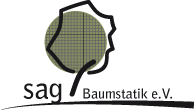Basics
Trees have the ability to compensate statically. They are able to slowly adapt to the prevailing loads in the event of changes in tree architecture and the tree field. Thus, a tree can be considered to be safe for traffic if no symptoms of damage are recognizable or abrupt interventions in the tree environment have taken place. Unforeseeable cases of damage, such as “a natural branch breakout, for which there were no particular signs beforehand, is in principle one of the natural and therefore acceptable risks of life, even for tree species that are more susceptible to this” (BGH ruling from 2014 from FLL 2020).
In the specialist literature, there are a large number of damage symptoms listed, which can indicate reduced stability or breakage safety (FLL 2020, Dujesiefken et al. 2019, Mattheck 2007). Such enumerations are useful as training materials. However, a final assessment of a tree’s traffic safety and development potential cannot usually be made based on defects considered in isolation. For this assessment, a comprehensive consideration taking into account the compensatory response of the tree, peculiarities of the tree species, and the tree environment is essential (Roloff 2015).
Sources
FLL 2020: Baumkontrollrichtlinien – Richtlinien zur Überprüfung der Verkehrssicherheit, Forschungsgesellschaft Landschaftsentwicklung Landschaftsbau e.V., 52 S.
Dujesiefken D., Jaskula, P., Kowol, T., Lichtenauer, A. 2019: Baumkontrolle unter Berücksichtigung der Baumart, Haymarket Media GmbH, Braunschweig, 320 S.
Mattheck, C. 2007: Aktualisierte Feldanleitung für Baumkontrollen mit Visual Tree Assessment, Forschungszentrum Karlsruhe GmbH, 170 S.
Roloff, A. 2015: Handbuch Bamdiagnostik – Baum-Körpersprache und Baum-Beurteilung, Eugen Ulmer GmbH, Stuttgart, 206 S.


